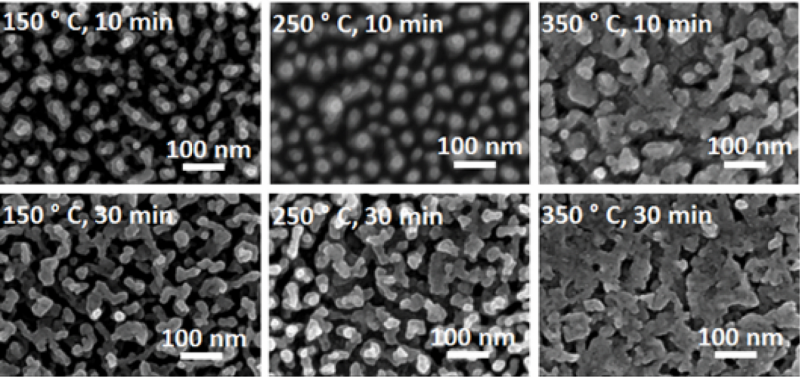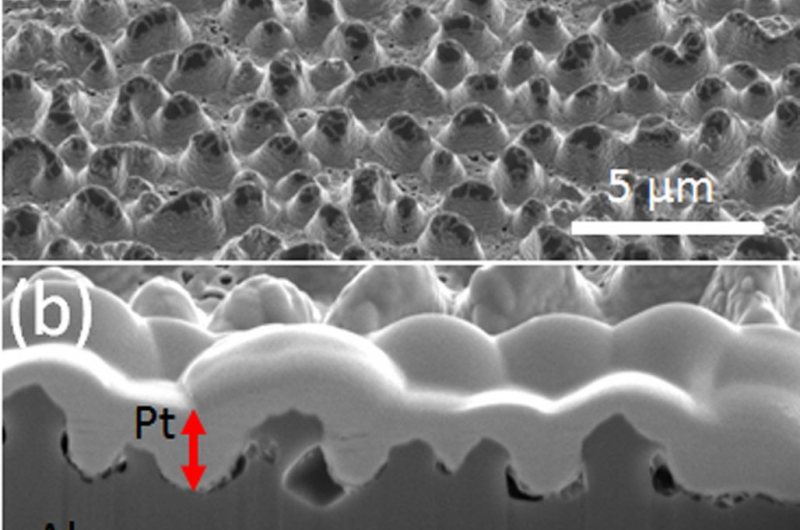Materials researcher fathoms growth of nanostructures on metal surface

Materials scientist Irem Tanyeli from energy research institute DIFFER has discovered how you can grow nanostructures in a controlled manner on a variety of metals, by bombarding the metals with helium particles. Such controlled nanostructures provide the possibility of advanced electrodes that produce sustainable fuel using solar energy. Tanyeli and her fellow researchers from DIFFER, ITER and the University of Basel published their results in Nature's Scientific Reports on 28 April 2015.
Blowing bubbles in metal
In their research Tanyeli and her colleagues exposed different metal surfaces to a hot intense beam of charged helium gas (plasma) in DIFFER's plasma experiment Magnum-PSI. Helium easily penetrates into the metal lattice where it forms bubbles that push the surrounding metal outwards. In this way different structures of tens to hundreds of nanometres in size arise per metal. By describing the differences, Tanyeli could analyse which underlying processes formed the nanostructures such as the temperature and the structure of the metal lattice.
That helium plasma can cause a metal to explode in nanostructures had previously been discovered when researchers tested wall materials for fusion energy reactors. They then discovered strange shapes on the metal wall surface. In a fusion reactor these nanostructures are undesirable because they reduce the discharge of heat, but in other applications the nanostructures are very useful, thinks co-researcher and DIFFER director Richard van de Sanden.
Fundamental insight
"Irem Tanyeli's research is important due to the fundamental insight", says Van de Sanden. "How do such nanostructures grow on a surface, which processes play a role in that, what are the bottlenecks, and how can you manage the process? If you understand that then you can produce advanced materials on a large-scale that can be given properties to order." That has a wide range of applications in sustainable energy technologies.

Converting sunlight into hydrogen
Tanyeli's nanostructures are interesting for catalyst applications such as the use of solar energy to produce hydrogen from water. Widely available and cheap materials can usually not compete against the efficiency of expensive but rare record holders such as platinum. But with the right nanostructures the cheaper materials can still be made competitive.

That opens up possibilities for the large-scale storage and conversion of sustainable energy in the form of chemical compounds: solar fuels. Such fuels have no net CO2-emission and therefore offer opportunities for the transport sector. Solar fuels are seen as an important way of storing sustainable energy, for example the solar energy that is generated during the sun-rich summer can be stored for use during the dark winter
More information: Surface Modifications induced by high fluxes of low energy helium ions, Nature Scientific Reports, 28 April 2015. DOI: 10.1038/srep09779
Journal information: Scientific Reports
Provided by Fundamental Research on Matter (FOM)





















